Spotlight on Narayan Mahon
Oct 31, 2014
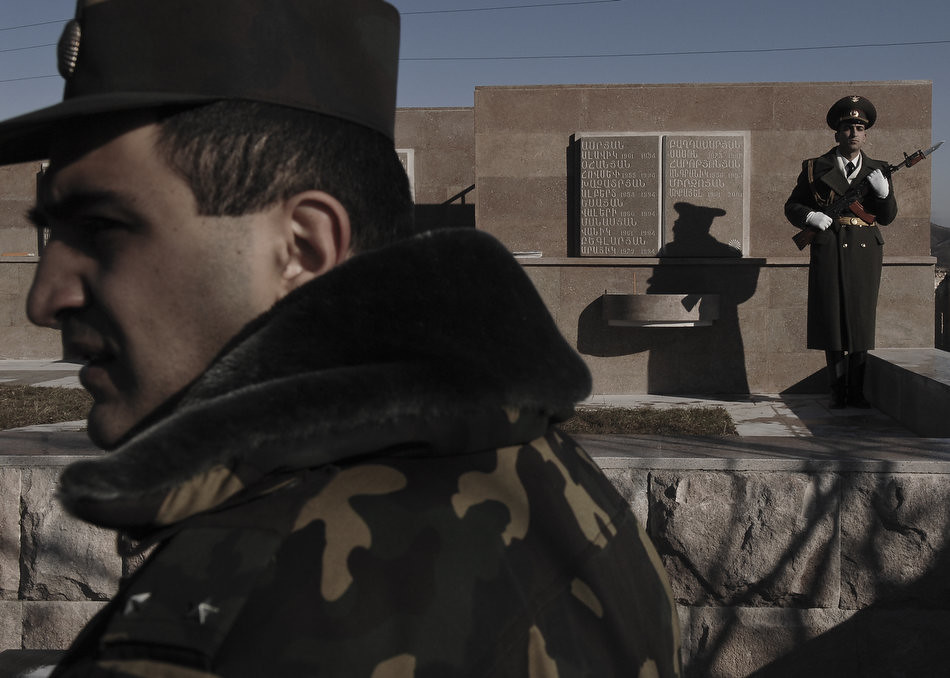
TID:
This image is striking and very solid graphically, can you please tell us a little of the backstory?
NARAYAN:
I went to the town of Kharamort in Nagorno Karabakh for a war memorial commemoration. This photo was really designed not in the moments of shooting it and that's why there are only three frames. I planned out this composition when I first saw the soldier standing at the memorial but had to wait for the right moment and timing so I would have three figures with clean separation. Fortunately, someone finally walked by and my patience was rewarded.
I wanted to shoot this event because I was looking ways to visually address the military and find images that speak to issues of security, which is an over-arching theme in the Lands in Limbo project. The Minister of Defense was there for the commemoration so the military was looking their sharpest, which also speaks to the organization of an unrecognized country
TID:
Since this is part of a larger body or work, can you speak more about what drew you to this?
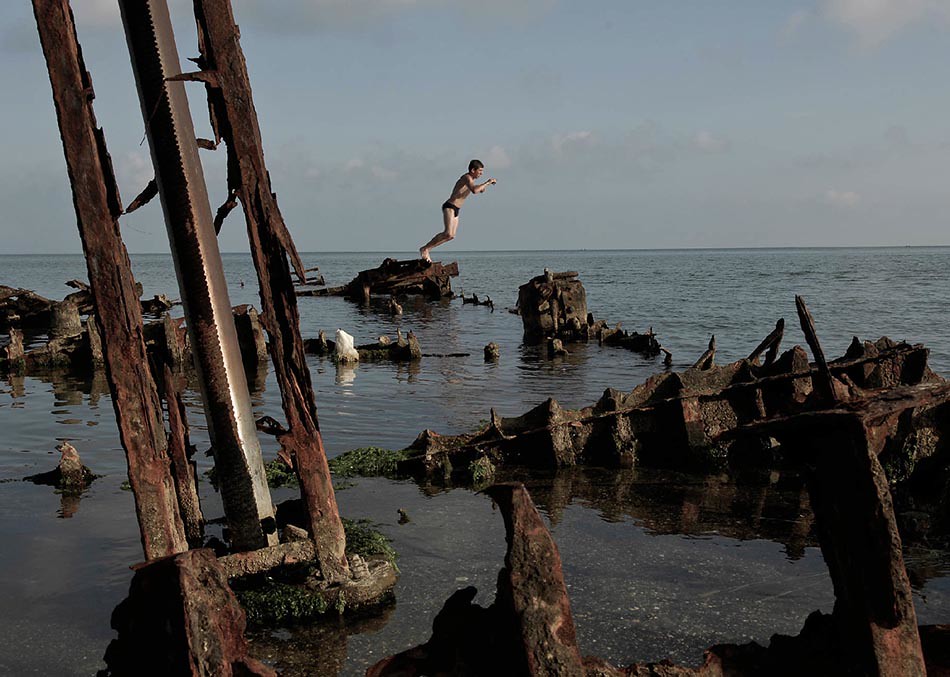
NARAYAN:
This project started before I knew the difference between an F-stop and a stop sign. The first time I learned there was such a thing as an unrecognized country I was traveling by train from Ukraine to Moldova and I passed through Transnistria, where I was shaken down for all my cash at the border and I wondered, what the hell kind of place is this! At the time I was an undergrad student studies abroad in Poland and just realizing I liked photography but knew nothing of it.
When I realized I wanted to be a photographer it was just before finishing college and I decided to go to graduate school for photography. In the letter wrote for my application, I said this is the project I want to work on, this is why I want to learn photography, to tell this story. I don't know why I was really drawn to this project, at least not beyond a very basic curiosity to see what it was like in an unrecognized country.
TID:
You traveled extensively for this project, can you talk about how you prepared mentally and logistically for it?
NARAYAN:
Yeah, logistically traveling to unrecognized countries isn't that easy. Some places require a visa, but as an unrecognized country, there are no consulates, so you need to find ways to obtain a letter to allow you to enter first and then get a visa once you are there. And it's difficult to travel directly to any of these places and only two of the countries have functioning airports. Mentally, there is just planning out what issues I want to address and thinking of ways to visually speak about those ideas. That can be hard when you go somewhere with preconceived ideas of what you will photograph, so I try and keep it loose. But it's hard to keep it loose when you only have so much time and you are spending a lot of money to be there to make some pictures.
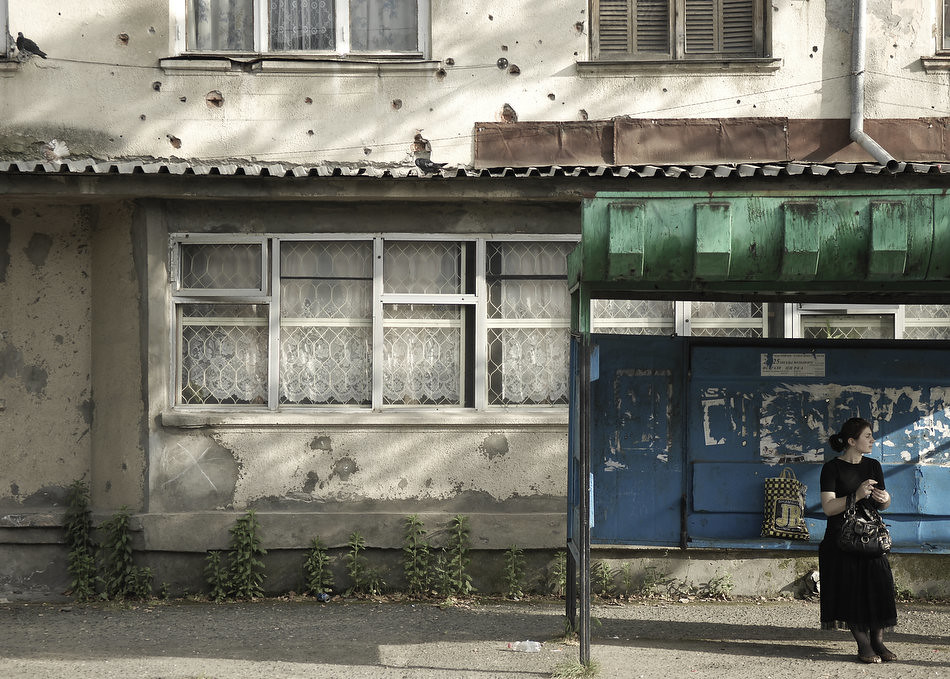
TID:
Of course, due to the nature of this project I’m sure there were a number of challenges. What were some of the challenges did you encountered with both the project and the image we’re featuring?
NARAYAN:
One big challenge with shooting in the former Soviet states featured in this project is the culture of paranoia. Nagorno Karabakh was the first step in this project, so I was just figuring all of that out. Photographing anything military in these places can be problematic. In Transnistria, I was shooting a military parade on the biggest street in the country and I was detained for that. In Nagorno Karabakh, the Minister of Foreign Affairs asked me to leave the country, and they somehow knew all the places I had been! In Abkhazia, I was detained three times in a single day.
Another day in Abkhazia, they military detained me and wouldn't let me go unless I deleted my images (I refused). And it's not like I am shooting anything overtly negative or subversive. I learned some Russian and that helped with getting around. Sometimes I would hire a translator but that was costly and I was broke. On the day I shot this image, things were surprising easy.
TID:
How did you handle and overcome these problems?
NARAYAN:
I try to be as above board and transparent as possible. In Abkhazia, I would register with the state press agency, and they were the people who came to my rescue when I was detained and asked to delete my images. In Somaliland, I was required to be accompanied by a soldier when I would leave the capital city. There were a lot of moments when I would be sitting in a moldy hotel room that's giving me respiratory problems, panicking over whether I was getting the images I wanted or thought I needed for that place, but I would remind myself that this project is bigger than once single place, and I don't need to tell the entire story of that place, but I am trying to tell the greater story of all the places, sharing an experience.
Reminding myself of that was, and still is, important. I would see images from some of these places and then my expectations would get polluted and I would start thinking that those were the kind of pictures I should be making. In the end, you can only make the pictures you know how to make because that's your DNA.
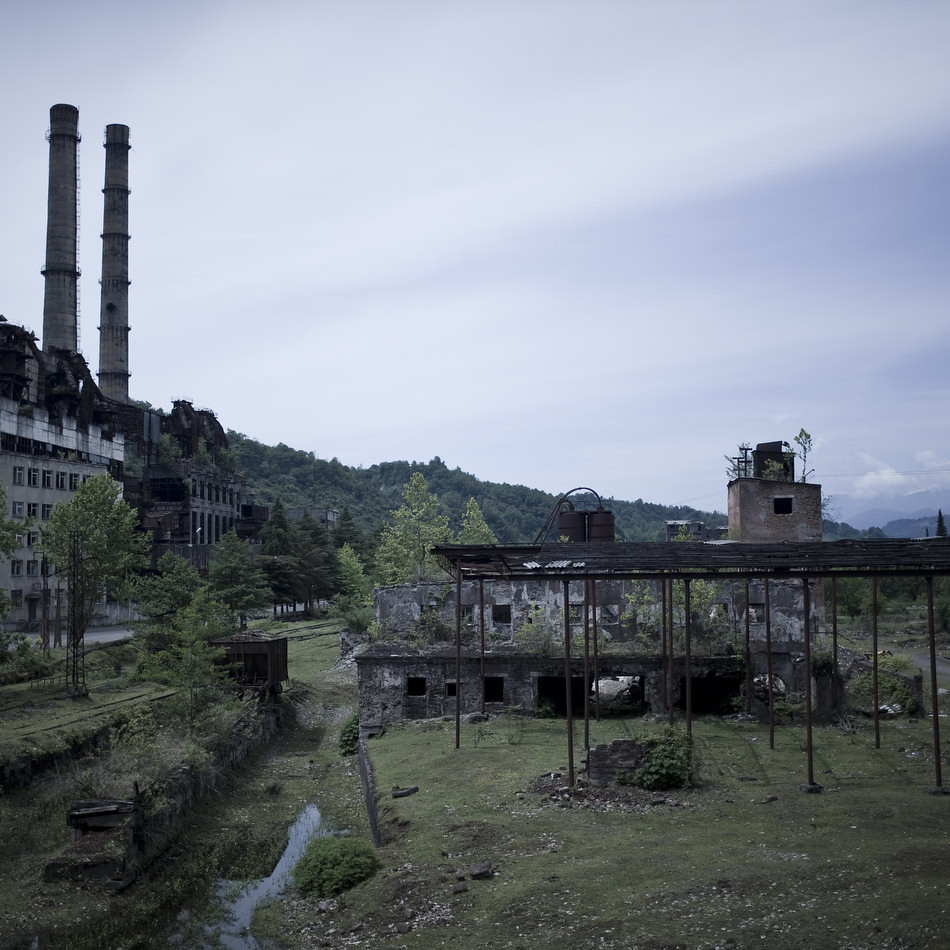
TID:
What surprised you about the construction of the main image? What has surprised you about the making of this body of work?
NARAYAN:
I guess I was surprised that it actually turned out the way I envisioned it when I saw the difference pieces separately. I was less surprised and more relieved that the construction of this whole project came together as it did, with five separate and distinct countries to photograph and all the logistical obstacles to deal with, so much could have gone wrong. But I am generally a positive thinker so I never thought it wouldn't work out. And that's not to say it worked out perfectly, I see many gaps in the project that I wish I was able to make it better.
TID:
Now, onto the moment. Can you tell us specifically what was going on both here and in your mind leading up to the picture?
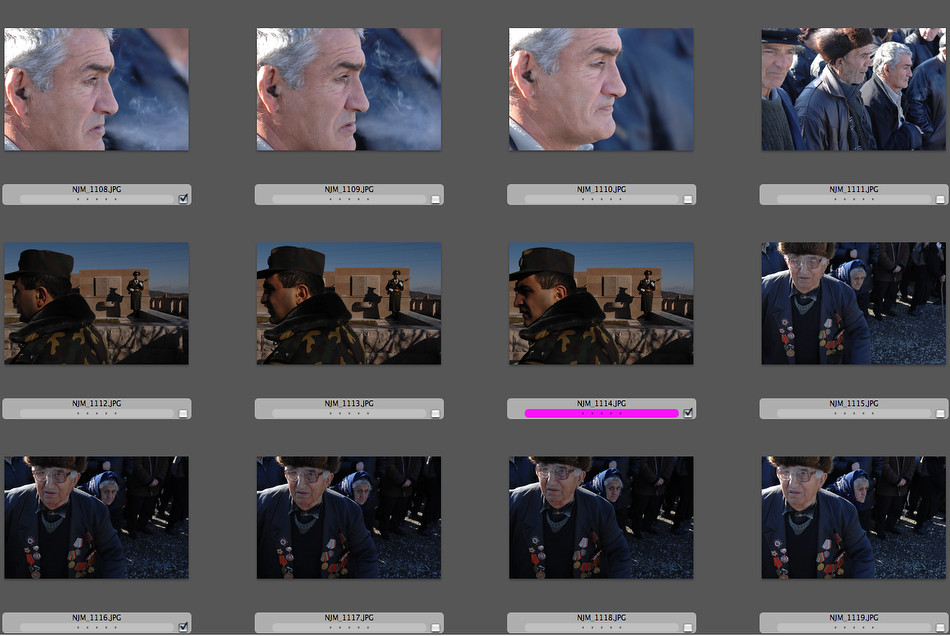
NARAYAN:
When I got to this place to shoot I saw the soldier standing at the wall, I shot a few frames of just him early on, along with some details, his hands on the Kalashnikov, the Soviet military belt buckle, stuff like that (that photo made my edit), but the images of just the soldier alone were lame and boring and not complex enough, so I wanted to wait for someone to walk by to add another layer to the image, so I made a mental note of the exposure and then went on shooting other things, equally lame and boring. But I was keeping an eye on that composition I wanted. Then, suddenly, it was all right here, the shadow was right, the other soldier walked by and boom, it was done in three frames. Sometimes being patient like that doesn't workout, but this time it did and I had planned it right... well, almost, that little line behind the bridge of the soldier's nose bugs me, if that wasn't there I would be much happier.
TID:
What have you learned about yourself in the process of making these images?
NARAYAN:
In terms of making images, I learned to be patient and have low expectations. That has helped me a lot in life. Personally I learned the issues of this project, centrally self-determination, is more complex than I had originally thought. I thought it was pretty clear, that self-determination is a good thing, and it is, but it's in conflict with multi-culturalism, which is also a good thing... but everything is conditional. Multi-culturalism should be the goal... but it only works if all groups enjoy the same rights and privileges, but that doesn't always happen.
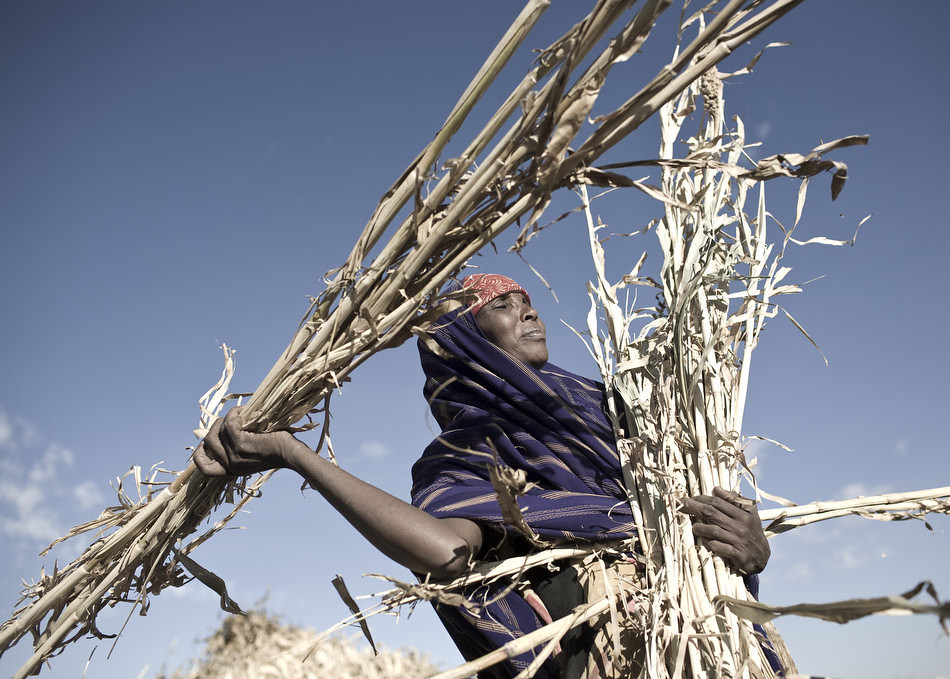
TID:
What have you learned about others?
NARAYAN:
I learned how strong nationalism can be and how destructive it is when it turns into chauvinism, which is a pretty ugly side of humanity. On the other hand, I learned how much people desire to be a part of a larger community and the isolation people feel when they aren't.
TID:
I read that your body of work will be featured in the Madison Museum of Contemporary Art. How did you create this opportunity?
NARAYAN:
Well, I've had this project on ice for a few years and at the end of 2013, I made it a 2014 goal to push this work out more. I had been mostly focused on building a career and finally felt like I was at a point to start putting some energy into getting this work out there. This opportunity came up after an introduction was made with one of the curators at the museum. After a series of meetings with the museum curators and director, they proposed a show in their State Street gallery, which is their medium sized gallery (they currently have an Alec Soth exhibit in their big gallery). I was over the moon. I was hoping they might just pass my name along to an art gallery in the area, but the decided to do a whole exhibition. It was very generous of them.
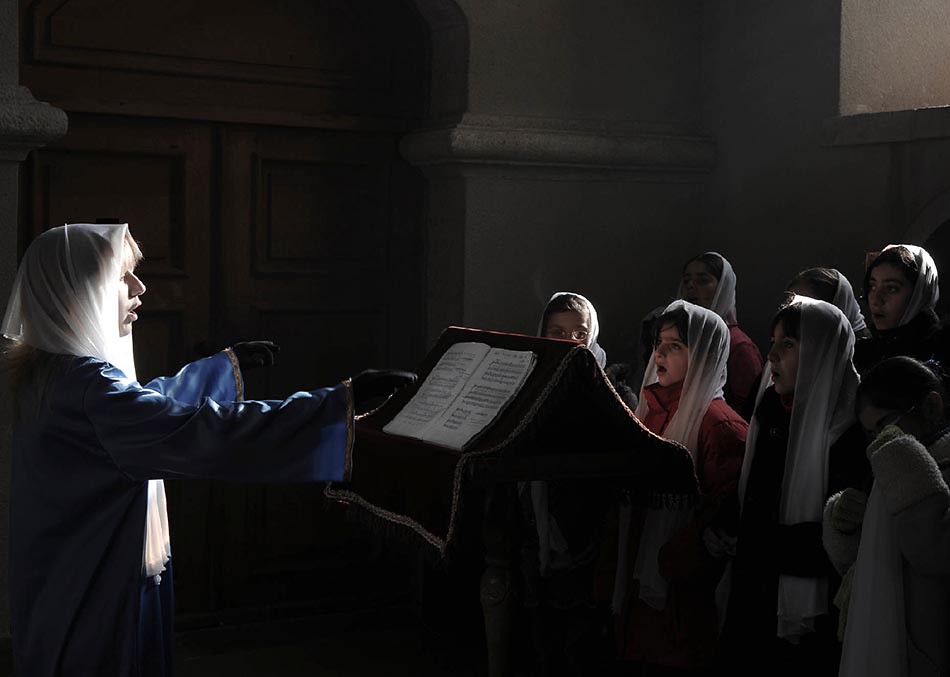
TID:
With this, do you have any advice do you have for photographers?
NARAYAN:
My advice is to be patient. It's really hard to be patient when you are pouring you heart and soul and your savings into a project, though. Letting your work sit for a while is a good thing, too. Let it collect some dust and then come back and look at it... I would see new things and change my edits. Having some time away from something you are that close to is good. You come back to it with fresh eyes and see it differently. For me it also helped to not have too many per-concieved ideas of what I should or need to be shooting or what I should expect to see. I mapped out this project in terms of themes but looked for the same themes in each country. I mean, this was a big, sprawling project and it needed to have a clear definition and project parameters, otherwise it could go on forever. So have a cut off point so you can say, OK, this good enough, it's done.
In terms of getting your work out to the public, that's a tougher one. When I was shooting this, I would pitch parts of it to magazines, like Newsweek and Time ect, and none of them would do anything with, which was very frustrating at the time. They could probably smell the desperation on me. Once I was less eager and desperate, I started getting some of it published, like Foreign Policy Magazine and Virginia Quarterly Review. But I was always proactive about trying to get it featured on the blogs, like NPR's picture show or in PDN's Exposure's section. I didn't wait around for some to discover it, I would propose it to them because I believed it would be good content for them and that the work deserved to be featured. So be pro-active but not desperate.

:::BIO:::
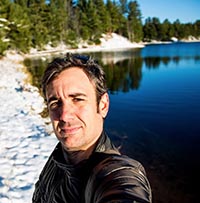
True story*, I was named by the guy on the side of the Yogi Tea boxes. Regardless of my super cool Indian name, I am, in fact, not Indian at all. I am the grandson of a Minnesotan circus tight-rope walker and the nephew of a Virginian goat farmer. As a young boy, I lived in an ashram in New Mexico and spent my adolescence cleaning boat shops in the Pacific Northwest to afford my bicycle habit while racing cyclo-cross in Europe on the US national cycling team. I came to photography through the fermented horse milk fog of hitchhiking through Mongolia.
At the age of twelve I learned that it is called the Pulitzer Prize and not, as I had long held to be true, the Pull It Surprise, which would later save me from many embarrassing moments, considering the grants I have received from the Pull It, I mean, Pulitzer Center. Upon completion of my graduate studies in photography at Syracuse University, I moved to Istanbul, where I spent much of my time trying to mentally will my phone to ring with glamorous and exciting assignments. Yadda yadda yadda now I live in Madison, Wisconsin with my wife and our adorable kitty, Earl Greyscale. Some times I enter awards and sometimes I win some (like AP-30 and even an Addy!!), but most of the time I don't. When I'm not losing photography awards, I'm out riding my bike.
You can view more of my work here:
And here:
http://www.newyorker.com/
http://www.npr.org/blogs/
http://www.pdnonline.com/
http://lens.blogs.nytimes.com/